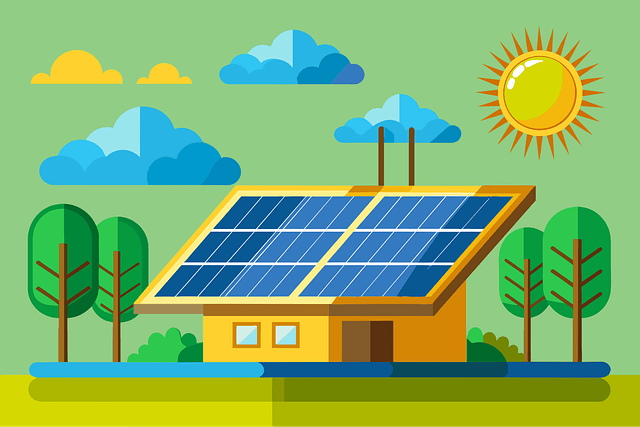




Investigations revealed that India’s renewable energy sector is entering a transformative new phase, one defined not merely by the pace of capacity addition, but by the strength, stability, and depth of its systems.
After a decade of record expansion, the focus is now shifting toward creating a robust, dispatch-able, and resilient clean energy architecture that can support the nation’s ambitious goal of achieving 500 GW of non-fossil capacity by 2030.
The Ministry of New and Renewable Energy (MNRE) underscores that India’s renewable growth story remains one of the fastest and most forward-looking in the world, evolving from speed to system strength, from quantity to quality, and from expansion to enduring integration.
A Shift from Quantity to Quality
In the last decade, India’s renewable energy capacity has grown more than fivefold, from under 35 GW in 2014 to over 197 GW (excluding large hydro) today. Such exponential growth inevitably reaches a point where the next leap requires not just more megawatts, but deeper system reforms.
The sector has entered that phase, where the focus is shifting from capacity expansion to capacity absorption. We are now dealing with grid integration, energy storage, hybridisation, and market reforms, the real foundations for a 500 GW plus non-fossil future. In that sense, the recent moderation in capacity addition is a recalibration, a necessary pause to ensure that future growth is stable, dispatchable, and resilient.
India’s RE Growth Remains Among the Fastest in the World, Driven by Multi-Pathway Expansion
Over 40 GW of awarded renewable projects are presently in advanced stages of securing PPAs, PSAs, or transmission connectivity — a clear reflection of the sector’s robust pipeline of committed investment. The reality is that India’s renewable market has outpaced the pace of its grid and contractual institutions, a challenge common to all countries undergoing large-scale energy transitions.
In this context, enforcement of Renewable Power Purchase Obligation by states/ DISCOMs, upgrading the transmission lines for evacuation of power and use of technology for grid integration remain top priorities before going ahead with large scale bids for RE.
In the current year, Central Renewable Energy Implementing agencies (REIAs) have done bids for 5.6 GW, while State agencies have done bids for 3.5 MW. Additionally Commercial and Industrial Consumers are likely to add nearly 6 GW of renewable energy capacity in calendar year 2025. Thus, capacity addition of RE is progressing through multiple pathways and not necessarily through REIA led bids alone.
Global headwinds have also played a role: supply-chain disruptions, fluctuating module prices, and tighter financing conditions have slowed commissioning timelines. Yet India continues to add 15–25 GW of new renewable capacity annually — a rate that remains among the fastest in the world.
A Deliberate Policy Pivot
Over the past two years, policy attention has consciously shifted from pure capacity growth to system design. Tenders for RE power with energy storage or peak power supply now dominate auctions, signaling a move toward firm and dispatchable green power. Battery Energy Storage Systems (BESS) are being integrated at both grid and project levels, marking the emergence of a new market. Domestic manufacturing, incentivised through the Production-Linked Incentive (PLI) scheme, Domestic Content Requirement, imposition of duties, implementation of ALMM, and duty exemptions for capital equipment, is reducing import dependency and creating industrial depth.
In addition, the recalibration of GST structures and ALMM provisions represents a strategic consolidation phase, aligning fiscal policy with the twin objectives of domestic value chain depth and technology assurance. Far from being disruptive, these adjustments are designed to stabilise costs, enhance module reliability, and promote scale efficiencies in India’s maturing solar manufacturing ecosystem. Concurrently, the trajectory of battery storage deployment is advancing through viability gap–funded projects, sovereign tenders, and emerging storage obligations, establishing the foundation for firm, dispatchable renewable capacity. These measures signal a shift from expansion-led growth to a more resilient, quality-driven, and system-integrated renewable energy architecture.
Such transitions take time to yield visible capacity figures, but they represent lasting structural progress — the kind that underpins a robust energy future.
Transmission Reforms Poised to Unlock Over 200 GW of Renewable Potential
Transmission has emerged as the new frontier. India’s grid is being reimagined through the ₹2.4 lakh crore Transmission Plan for 500 GW, linking renewable-rich states with demand centres. The Government is prioritizing investment in transmission infrastructure through the Green Energy Corridors and new high-capacity transmission lines from Rajasthan, Gujarat, and Ladakh. While these projects are multi-year efforts, once operational they will unlock over 200 GW of new renewable capacity. The current stage is therefore temporary - a transition lag, not a structural ceiling.
Government has already planned for building HVDC corridors and boosting inter-regional transmission capacity from 120 GW today to 143 GW by 2027, and 168 GW by 2032.
Additionally, the recent amendments to the CERC General Network Access (GNA) Regulations, 2025 have significantly improved the outlook for transmission readiness. The introduction of time-segmented access— ‘solar-hours’ and ‘non-solar-hours’— allows dynamic sharing of corridors between solar, wind, and storage projects, unlocking idle capacity and easing congestion in RE-rich states. Provisions for source flexibility, stricter connectivity norms, and greater substation-level transparency further streamline grid access and curb speculative allocations. These reforms mark a decisive step toward optimising transmission utilisation and fast-tracking stranded renewable projects, directly addressing one of the sector’s core implementation challenges.
India Remains a Magnet for Clean Energy Capital
Despite short-term delays, India remains a magnet for clean energy capital. Renewable tariffs continue to be among the lowest globally, ensuring long-term competitiveness. India continues to be one of the most attractive destinations for investment in clean energy sector, and international interest remains high. Global investors are not exiting India; they are repositioning towards integrated and storage-backed portfolios. The sector’s fundamentals — strong demand growth, policy continuity, and cost competitiveness — remain firmly intact.
The Real RE Story: From Expansion to Integration
The deeper story is one of evolution, not erosion. India’s clean energy transition is entering a phase where the core challenges are about integration, reliability, and scale efficiency. A temporary flattening of project pipeline in this context is a mark of maturity. The sector is doing the harder work now — synchronising renewables with grid infrastructure, financial discipline, and long-term market design.
To complement physical grid expansion, Virtual Power Purchase Agreements (VPPAs) and other market-based instruments will play a pivotal role in accelerating renewable energy deployment. VPPAs allow corporate and institutional buyers to contract renewable power virtually—decoupling procurement from physical delivery—thereby deepening demand, providing price certainty to developers, and stimulating private investment in projects awaiting grid connectivity. Coupled with green attribute trading, market-based ancillary services, and day-ahead and real-time market integration, these instruments will create a robust ecosystem for flexible, demand-driven renewable growth. Such mechanisms are in the process of being strategically incorporated under the Electricity (Amendment) Bill or through CERC market regulations, with enabling policy support from MNRE and MoP, to align corporate procurement, grid flexibility, and national decarbonisation targets.
Looking Ahead
The next phase of growth is already taking shape:
These are the levers that will propel India toward its 2030 targets — not by sheer speed, but by strategic endurance.
Viksit Bharat: A Renewable Energy Transition Growing Up
India’s clean energy transition is not defined by quarterly numbers but by institutional durability and stickability. After a decade of sprinting, the sector is learning to move forward by synchronising capacity with grid strength, local manufacturing, and financial stability. India’s RE journey is, in a phase of consolidation — one that ensures that when the next acceleration comes, it will be both faster and far more sustainable. India’s renewable story has not lost momentum. It has gained maturity.
By Navin Sreejith



